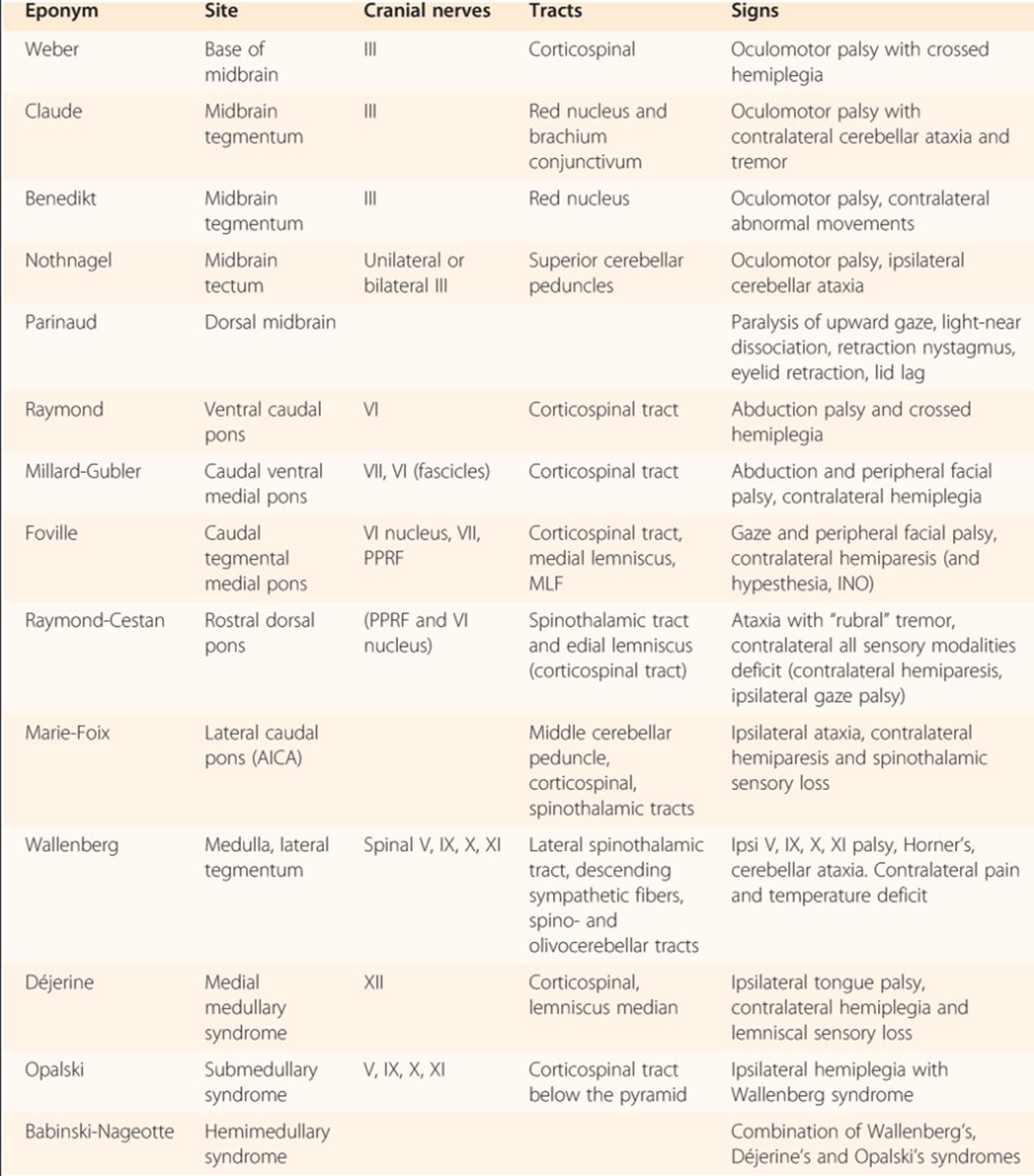Table of Contents
There are several syndromes that appear after lesions in brainstem region of the brain and they are called the brainstem syndromes.
Mid-brain syndromes
- Weber's syndrome
The critical structures involved are the two most important pathways - descending corticospinal and corticobulbar fibers in the cerebral peduncle, and the fibers of the third nerve that traverse the peduncle on exiting the midbrain. If the lesion is on the right; the patient will have a left hemiparesis and a right third nerve palsy and vice versa.
- Benedikt's syndrome
Midbrain stroke involving the third nerve is causing this syndrome characterized by third nerve palsy on one side with contralateral ataxia.
Medial pons syndromes
It is proven that lesions of the sixth nerve nucleus cause paralysis of gaze to the side of the lesion. Lesions involving the fibers of the sixth nerve as they travel through the pons can also involve the medial lemniscus. This is causing unilateral abducens weakness and contralateral loss of position and vibration.
Lateral medullar syndrome (Wallenberg syndrome)
This is the most common of the brain stem strokes. When this stroke involves the spinothalamic tract, it results in contralateral loss of pain and temperature sensation below the neck. Involvement of the descending nucleus and tract of V results in loss of pain and temperature sensation on the face ipsilateral to the lesion.
The locked in syndrome (infarction of the base of the pons)
In this syndrome the corticospinal and corticobulbar tracts in the basis of the pons are interrupted which leads to the quadriplegia and paralysis of all cranial nerve muscles except for those controlling eye movements. This means that the person is literally “locked in”, accept their eyes. If the lesion extends into the tegmentum of the caudal pons, horizontal eye movements may also be affected while vertical eye movements are still possible, and sensation can be affected. In this case the only way to communicate with these unfortunate patients is to ask them to move their eyes in response to questions.
- Pontine hemorrhage
Bleeding or hemorrhage into the pons results in coma, decerebrate posturing, and small pupils.
Other less common brainstem syndromes [4]

Cranial nerves and brainstem
All cranial nerves except I and II, originate in the brainstem, which includes the midbrain, the pons, and the medulla. There are 12 cranial nerves and they can be divided into sensory, motor, or mixed nerves. Overall, sensory nerve nuclei tend to be located in the lateral brainstem, while motor nuclei tend to be located medially.

